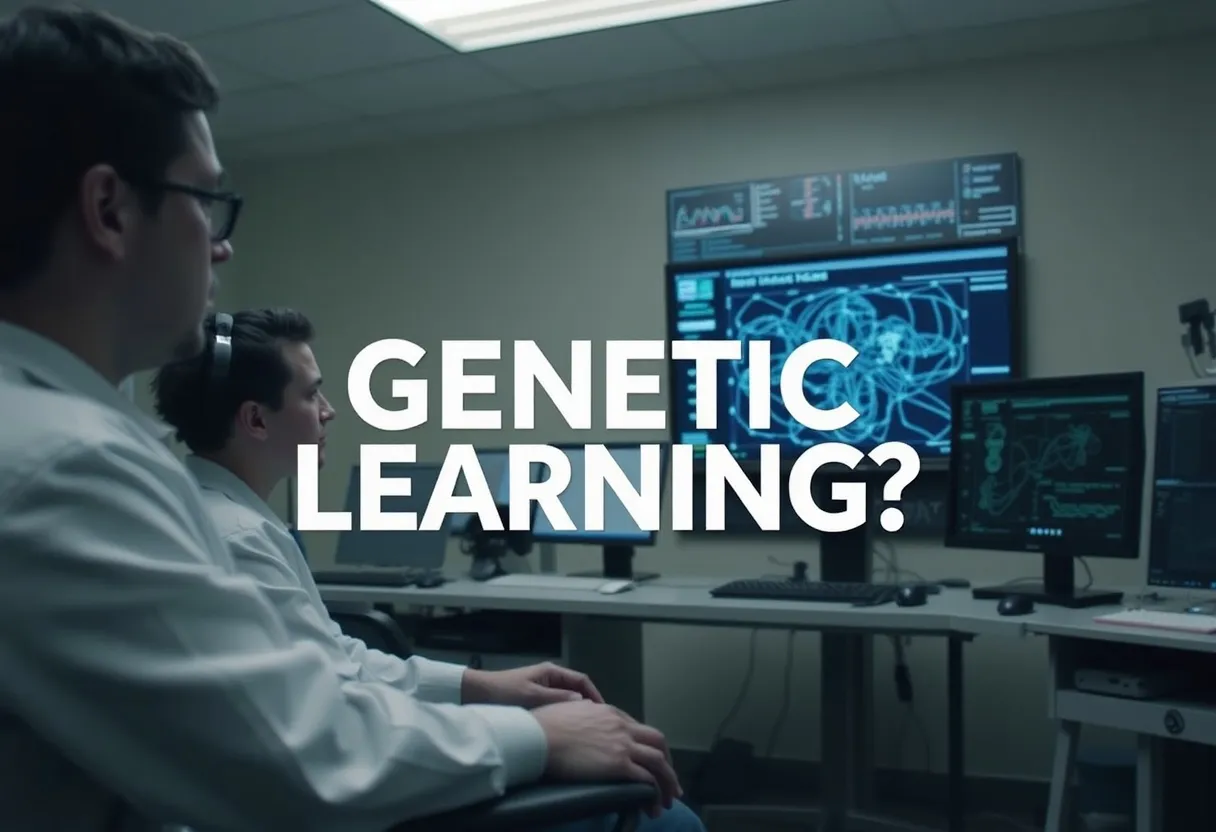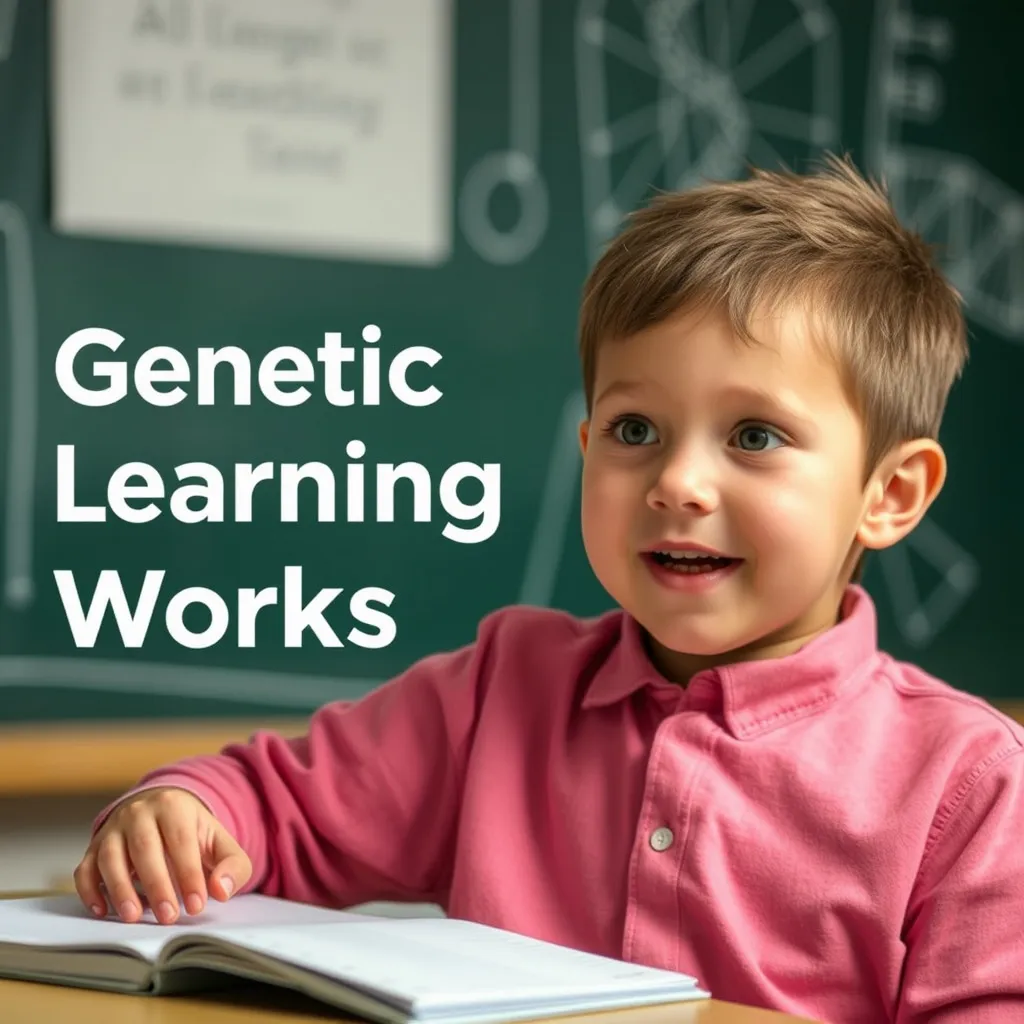Introduction
Attention Deficit Hyperactivity Disorder (ADHD) is often associated with challenges in focus, impulse control, and executive function. But one lesser-known consequence of ADHD is sleep disruption—a condition that compounds emotional instability and cognitive fatigue. While traditional treatments often involve stimulant medications and behavioral therapy, a groundbreaking non-pharmaceutical method is emerging: Genetic Learning (GL).
This article explores how Genetic Learning helps regulate sleep patterns in ADHD patients by tapping into subconscious neuroplasticity and restoring hormonal balance.

The Sleep–ADHD Connection
Over 70% of individuals with ADHD report trouble falling asleep, staying asleep, or waking up refreshed. The causes are multi-layered:
Overactive mental processing
Dopamine and melatonin imbalances
Delayed circadian rhythms
Anxiety-driven hyperarousal at bedtime
Poor sleep, in turn, worsens ADHD symptoms—creating a cycle of fatigue, frustration, and attention failure.

What is Genetic Learning?
Genetic Learning is a structured cognitive training program that activates neural circuits related to pattern recognition, subconscious processing, and deep concentration. Through carefully timed matrix and logic-based exercises, GL promotes:
Mental order
Emotional balance
Hormonal recalibration (especially melatonin and serotonin)
Sleep regulation
Rather than targeting the symptoms of ADHD, GL focuses on restructuring the brain itself—building healthier automatic systems that support both daytime focus and nighttime recovery.

Why Genetic Learning Works for ADHD
Neural Calibration Without Medication
GL does not rely on external substances. Instead, it aligns the brain’s natural patterns through timed mental challenges that reduce cognitive chaos.Dopamine and Melatonin Balance
The subconscious training methods in GL have been shown to help regulate dopamine production, while also stimulating melatonin release, which is crucial for initiating sleep in ADHD brains.Evening Brain Engagement
Practicing GL exercises in the evening allows the mind to enter a structured wind-down phase, reducing bedtime resistance and improving sleep latency.

Case Insight: Adolescent Recovery
A 14-year-old participant diagnosed with ADHD was enrolled in a 3-week GL training protocol. Results showed:
Sleep onset time reduced from 90 minutes to 30 minutes
Night awakenings dropped by 60%
Daytime focus improved noticeably, even without medication
This success supports the idea that targeted brain training can substitute or complement pharmacological solutions for ADHD-related insomnia.

Long-Term Benefits
Improved academic performance
Reduced reliance on sleep aids or stimulants
Enhanced emotional regulation
Lower risk of anxiety and depression due to better sleep hygiene
Conclusion
Genetic Learning offers an empowering, brain-first approach to sleep recovery for ADHD patients. By bypassing chemical treatments and targeting the neural roots of the disorder, GL provides sustainable and life-changing improvements in sleep quality, focus, and mental health.
For individuals seeking a drug-free solution to ADHD-related insomnia, Genetic Learning may be the key to unlocking the brain’s true potential—day and night.
Discover More with Sleeping Order
Introduction
Attention Deficit Hyperactivity Disorder (ADHD) is often associated with challenges in focus, impulse control, and executive function. But one lesser-known consequence of ADHD is sleep disruption—a condition that compounds emotional instability and cognitive fatigue. While traditional treatments often involve stimulant medications and behavioral therapy, a groundbreaking non-pharmaceutical method is emerging: Genetic Learning (GL).
This article explores how Genetic Learning helps regulate sleep patterns in ADHD patients by tapping into subconscious neuroplasticity and restoring hormonal balance.

The Sleep–ADHD Connection
Over 70% of individuals with ADHD report trouble falling asleep, staying asleep, or waking up refreshed. The causes are multi-layered:
Overactive mental processing
Dopamine and melatonin imbalances
Delayed circadian rhythms
Anxiety-driven hyperarousal at bedtime
Poor sleep, in turn, worsens ADHD symptoms—creating a cycle of fatigue, frustration, and attention failure.

What is Genetic Learning?
Genetic Learning is a structured cognitive training program that activates neural circuits related to pattern recognition, subconscious processing, and deep concentration. Through carefully timed matrix and logic-based exercises, GL promotes:
Mental order
Emotional balance
Hormonal recalibration (especially melatonin and serotonin)
Sleep regulation
Rather than targeting the symptoms of ADHD, GL focuses on restructuring the brain itself—building healthier automatic systems that support both daytime focus and nighttime recovery.

Why Genetic Learning Works for ADHD
Neural Calibration Without Medication
GL does not rely on external substances. Instead, it aligns the brain’s natural patterns through timed mental challenges that reduce cognitive chaos.Dopamine and Melatonin Balance
The subconscious training methods in GL have been shown to help regulate dopamine production, while also stimulating melatonin release, which is crucial for initiating sleep in ADHD brains.Evening Brain Engagement
Practicing GL exercises in the evening allows the mind to enter a structured wind-down phase, reducing bedtime resistance and improving sleep latency.

Case Insight: Adolescent Recovery
A 14-year-old participant diagnosed with ADHD was enrolled in a 3-week GL training protocol. Results showed:
Sleep onset time reduced from 90 minutes to 30 minutes
Night awakenings dropped by 60%
Daytime focus improved noticeably, even without medication
This success supports the idea that targeted brain training can substitute or complement pharmacological solutions for ADHD-related insomnia.

Long-Term Benefits
Improved academic performance
Reduced reliance on sleep aids or stimulants
Enhanced emotional regulation
Lower risk of anxiety and depression due to better sleep hygiene
Conclusion
Genetic Learning offers an empowering, brain-first approach to sleep recovery for ADHD patients. By bypassing chemical treatments and targeting the neural roots of the disorder, GL provides sustainable and life-changing improvements in sleep quality, focus, and mental health.
For individuals seeking a drug-free solution to ADHD-related insomnia, Genetic Learning may be the key to unlocking the brain’s true potential—day and night.
Discover More with Sleeping Order
Share this post
Subscribe to our newsletter
Related posts
Genetic Learning for Children: Building Strong Brains and Better Sleep from an Early Age
Introduction Childhood is the most critical period for brain development. It’s when neural pathways are
The Sleep Architecture Explained: How Genetic Learning Optimizes Each Sleep Stage
Introduction Sleep is not a single state—it’s a cycle made of several distinct stages, each
Chronotypes and Genetic Learning: Tailoring Sleep and Brain Training to Your Internal Clock
Introduction Not everyone is wired to wake up early. Some feel energized at dawn,
Share this post
Subscribe to our newsletter
Related posts
Genetic Learning for Children: Building Strong Brains and Better Sleep from an Early Age
Introduction Childhood is the most critical period for brain development. It’s when neural pathways are
The Sleep Architecture Explained: How Genetic Learning Optimizes Each Sleep Stage
Introduction Sleep is not a single state—it’s a cycle made of several distinct stages, each
Chronotypes and Genetic Learning: Tailoring Sleep and Brain Training to Your Internal Clock
Introduction Not everyone is wired to wake up early. Some feel energized at dawn,



